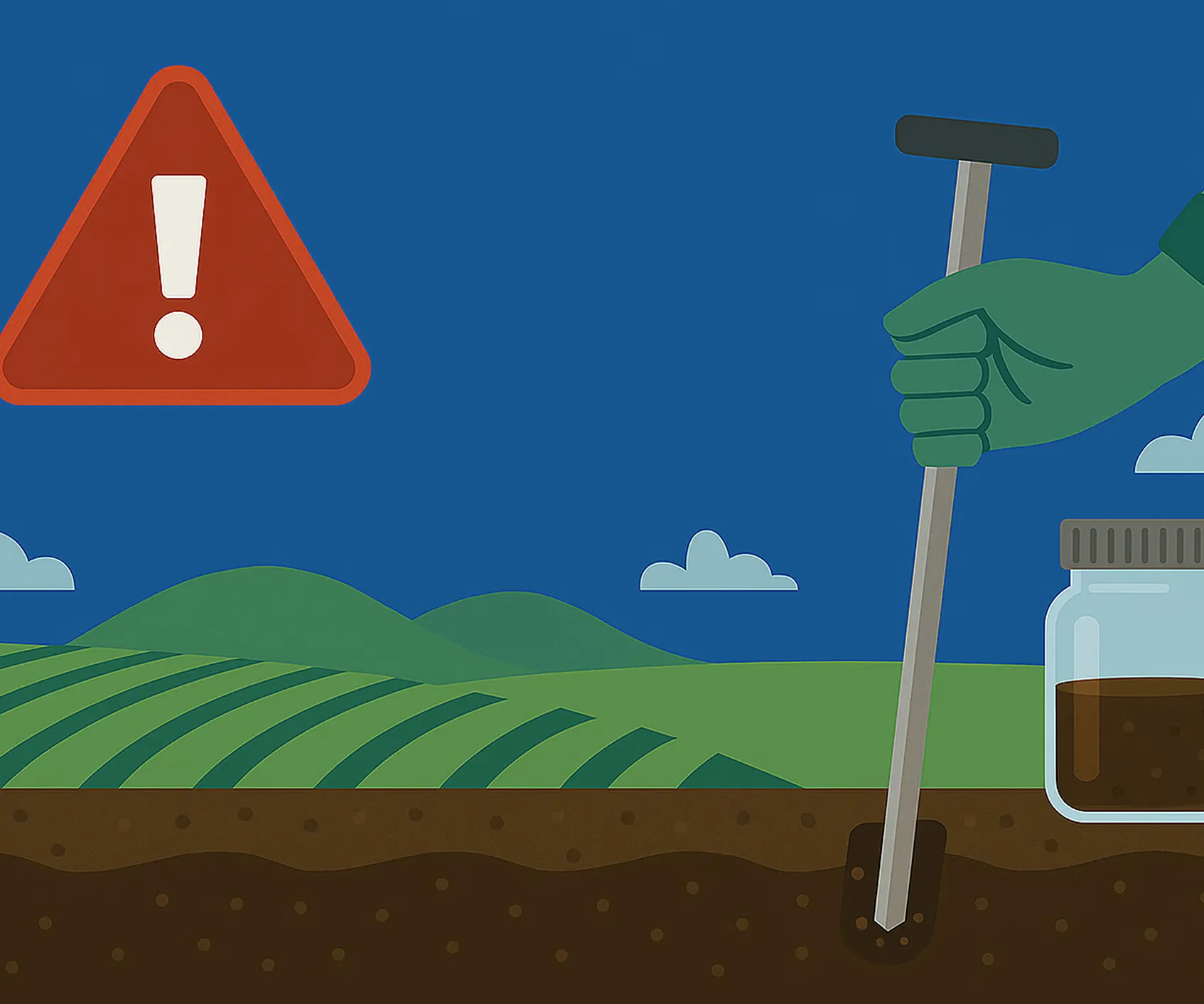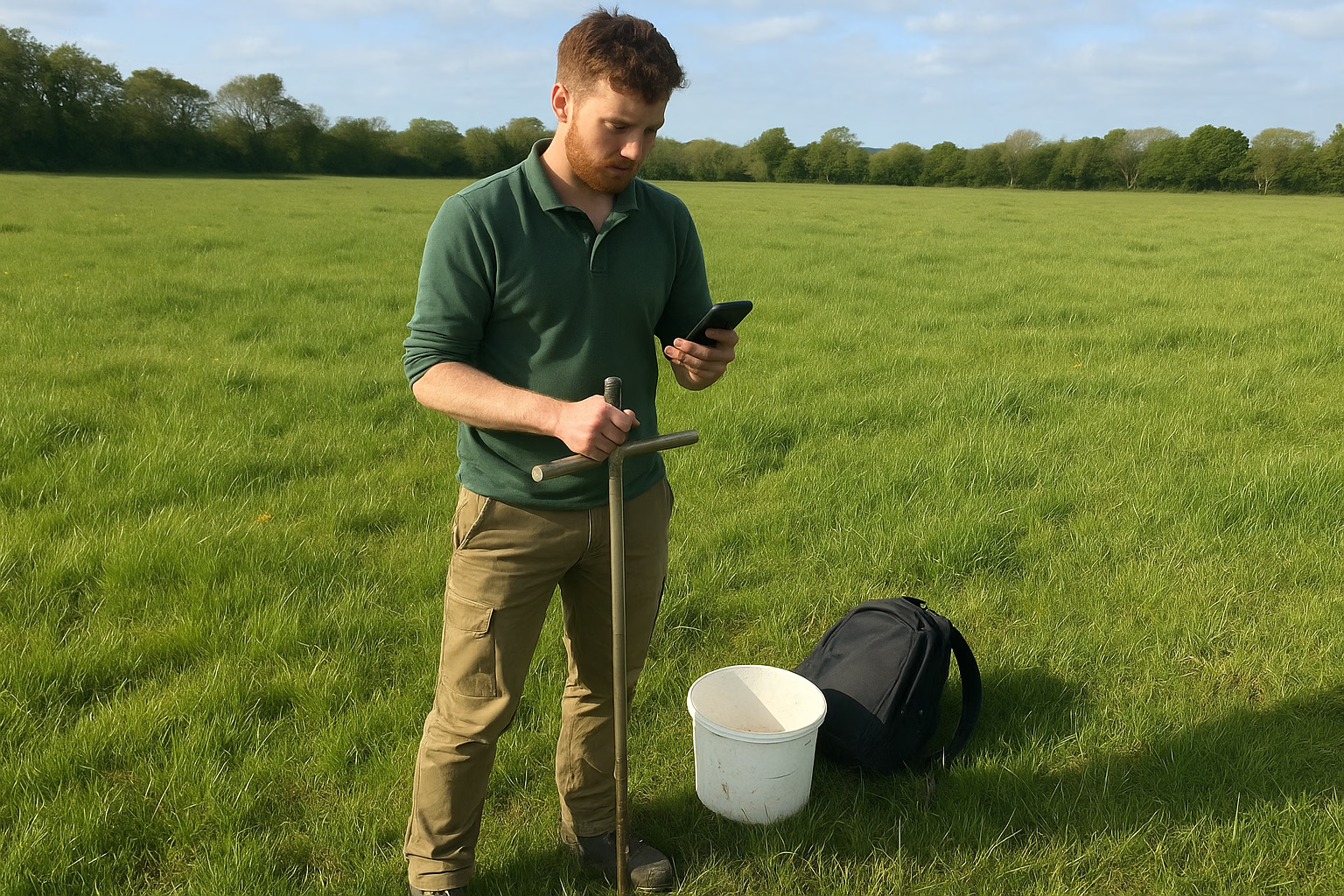

Founder

Sep 15, 2025
DAFM's 2025 soil sampling regulations are changing the game. Learn how a digital, GPS-based workflow can not only keep you compliant but also unlock a new level of precision for your farm. Read our complete guide to future-proofing your soil sampling.
Are You Ready for the Biggest Shift in Soil Sampling in a Decade?
The clock is ticking. A fundamental change to how soil samples are taken and recorded is coming, and it will affect every farmer and advisor in Ireland. From September 14th, 2025, the old way of doing things won't just be outdated—it will be costly.
For years, a soil test result was just a list of numbers. But the Department of Agriculture, Food and the Marine (DAFM) is bringing soil sampling into the digital age. This isn't just another piece of paperwork; it's a move towards a more accurate, data-driven, and sustainable future for Irish agriculture. But it requires a new approach, and those who aren't prepared will face significant penalties.
The new rule is simple but has huge implications. According to the regulations (SI 42 of 2025), any soil analysis results issued after September 14th, 2025, must state the corresponding geo-reference (GPS co-ordinates) or the Land Parcel Identification System (LPIS) parcel(s) that the sample represents.
If a single sample covers several small parcels, the report must list the LPIS number for each of those parcels.
What happens if you don't comply? Any soil test results that don't have this specific location data will be defaulted to Phosphorus (P) Index 4.
A default P Index 4 is not a minor issue. It's a significant penalty that assumes your soil has a high phosphorus level, whether it does or not. This has major consequences for your farm's compliance and profitability:

This new regulation makes one thing clear: the era of relying solely on paper maps and notebooks for soil sampling is over. The best way to guarantee compliance and avoid the P Index 4 penalty is to adopt a digital, GPS-based workflow.
This is where a modern farm management platform becomes essential. Here’s what your workflow needs to include:
This isn't just about meeting a new rule. It's about building a more accurate and powerful dataset for your farm. When you know exactly where your samples are from, you can make smarter, more precise decisions about fertiliser, slurry, and lime application. You save money, improve soil health, and protect the environment.
September 2025 might seem far away, but with soil samples being valid for several years, the decisions you make this sampling season will have an impact long after the deadline.
Now is the time to talk to your advisor and review your soil sampling process. Is it ready for this digital-first future? Does it automatically capture the data you need to stay compliant?
The future of soil sampling is here. It's more accurate, more efficient, and fully digital. Make sure your farm is ready for it.
Making sure your farm is ready is simpler than you think. The Livefarm platform was designed specifically to meet the challenges of the new DAFM regulations head-on.
Our end-to-end soil sampling workflow empowers your team to:
This eliminates paperwork, creates a perfect, auditable trail, and guarantees you will avoid the costly P Index 4 penalty.
Don't wait for the 2025 deadline to create a compliance headache. Switch on a smarter way to work today.Click
Click here to request a free demo of Livefarm to see our soil sampling solution in action.

The clock is ticking. A fundamental change to how soil samples are taken and recorded is coming, and it will affect every farmer and advisor in Ireland. From September 14th, 2025, the old way of doing things won't just be outdated—it will be costly.
For years, a soil test result was just a list of numbers. But the Department of Agriculture, Food and the Marine (DAFM) is bringing soil sampling into the digital age. This isn't just another piece of paperwork; it's a move towards a more accurate, data-driven, and sustainable future for Irish agriculture. But it requires a new approach, and those who aren't prepared will face significant penalties.
The new rule is simple but has huge implications. According to the regulations (SI 42 of 2025), any soil analysis results issued after September 14th, 2025, must state the corresponding geo-reference (GPS co-ordinates) or the Land Parcel Identification System (LPIS) parcel(s) that the sample represents.
If a single sample covers several small parcels, the report must list the LPIS number for each of those parcels.
What happens if you don't comply? Any soil test results that don't have this specific location data will be defaulted to Phosphorus (P) Index 4.
A default P Index 4 is not a minor issue. It's a significant penalty that assumes your soil has a high phosphorus level, whether it does or not. This has major consequences for your farm's compliance and profitability:
This new regulation makes one thing clear: the era of relying solely on paper maps and notebooks for soil sampling is over. The best way to guarantee compliance and avoid the P Index 4 penalty is to adopt a digital, GPS-based workflow.
This is where a modern farm management platform becomes essential. Here’s what your workflow needs to include:
This isn't just about meeting a new rule. It's about building a more accurate and powerful dataset for your farm. When you know exactly where your samples are from, you can make smarter, more precise decisions about fertiliser, slurry, and lime application. You save money, improve soil health, and protect the environment.
September 2025 might seem far away, but with soil samples being valid for several years, the decisions you make this sampling season will have an impact long after the deadline.
Now is the time to talk to your advisor and review your soil sampling process. Is it ready for this digital-first future? Does it automatically capture the data you need to stay compliant?
The future of soil sampling is here. It's more accurate, more efficient, and fully digital. Make sure your farm is ready for it.
Making sure your farm is ready is simpler than you think. The Livefarm platform was designed specifically to meet the challenges of the new DAFM regulations head-on.
Our end-to-end soil sampling workflow empowers your team to:
This eliminates paperwork, creates a perfect, auditable trail, and guarantees you will avoid the costly P Index 4 penalty.
Don't wait for the 2025 deadline to create a compliance headache. Switch on a smarter way to work today.Click
Click here to request a free demo of Livefarm to see our soil sampling solution in action.
"...reports of soil analysis results issued after the 14th of September 2025 must state the corresponding georeference or Land Parcel Identification System (LPIS) parcel(s) represented by the soil sample. Soil test results issued after 14th of September 2025 that do not state the corresponding georeference or LPIS parcel(s) will be defaulted to P Index 4."
S.I. No. 42/2025 - European Union (Good Agricultural Practice for Protection of Waters) (Amendment) Regulations 2025
Blog